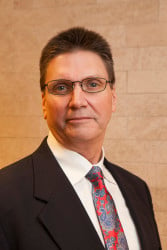Running a Successful One-Person Shop
As anyone who has ever contemplated running their own one-person brokerage can tell you, the appeal is undeniable. There’s no one to answer to but yourself, so you can create your own schedule, choose what clients you want to work with, and best of all, you get to keep what you make. The flip side is the enormous responsibility and financial risk that comes with starting a new business, even for experienced commercial real estate brokers.
Jim Klein, SIOR,
Klein Commercial Real Estate
“Some of my friends at the big shops admire the independence and not having all of these corporate tentacles restraining you in what you can do, and they’re envious of those lack of restraints,” says Jim Klein, SIOR, who has been operating as a sole proprietor and president of LA-based Klein Commercial Real Estate for over 25 years. “But you really have to pick your place in the market. I’m lucky, I’ve got a long history behind me, but getting out there now…you really have to be selective and capable and have really incredible skills. I’m actually seeing more people going towards the big shops, maybe because of the support, recognition, and less personal frustration.”
Klein broke into the CRE business nearly forty years ago, learning the ropes at national firm Grubb & Ellis before opening Klein Commercial in 1995. Since that time, he has been largely on his own, with the exception of the occasional intern, some outsourcing to graphic artists, and a recently added part-time tech person. Klein says one of the most important ingredients in his success has been maintaining his focus, and for him that means working almost exclusively with industrial clients—and more specifically, corporate users, on both a local and national basis. He also believes that his location in the market has been a key factor. “Not working out of the house, getting an office with a storefront and with signage on a street with high visibility, near my customers, with a great delicatessen next door, that’s been very helpful for me,” says Klein. “My feeling is that if a real estate guy can’t find a great location, he’s in the wrong business.”
He is a true believer in the power of marketing, using some social media and sending out email blasts via Salesforce, but also snail-mailing old-fashioned, original artwork post cards that are surprisingly effective—as well as relatively inexpensive. He recommends consistent blogging/vlogging, with written posts heavy on graphics prominently displayed on his homepage that also go out in email blasts. But as is the case with all brokers, the best returns come through fostering and maintaining relationships. “I think that you build a relationship with customers by proving yourself over many years, and then at a certain point, those customers come to rely on you.” And the one area of relationships that has paid the greatest dividends is his relationship with fellow SIORs.
Read the full article in the Fall 2021 issue of SIOR Report now!
Related Articles:










